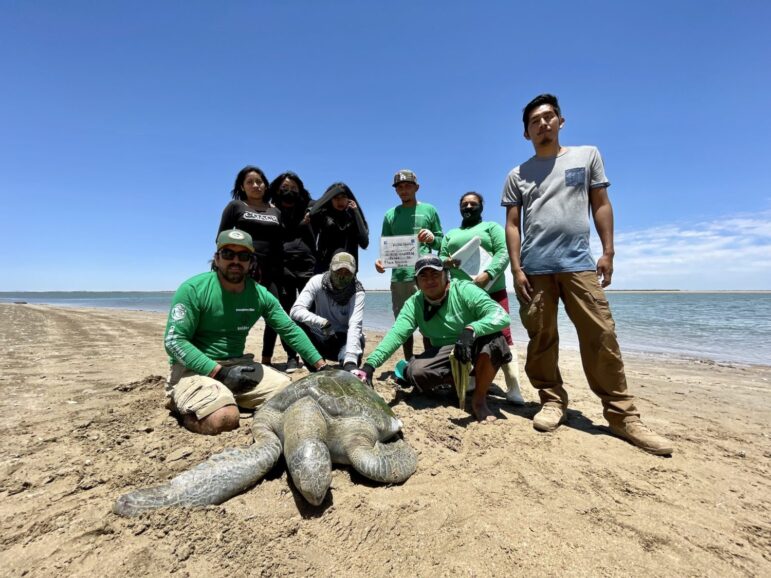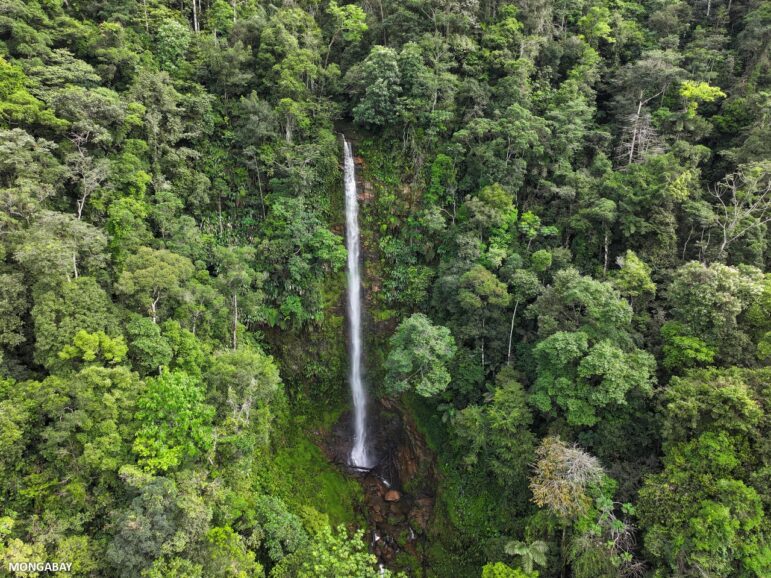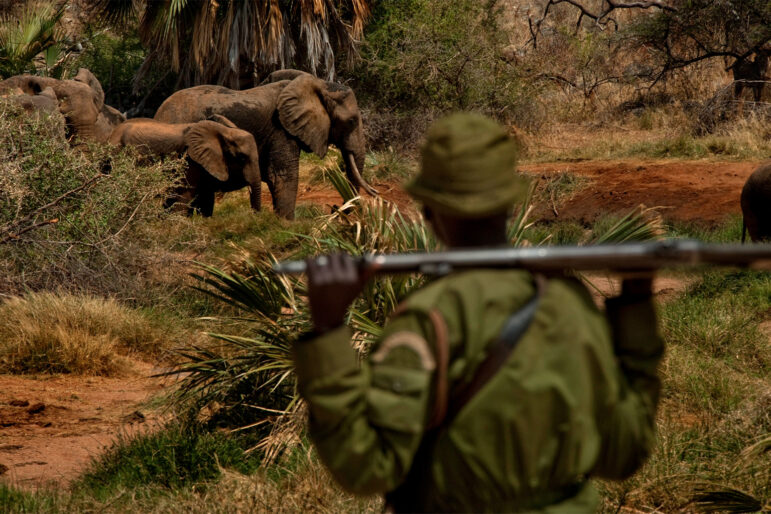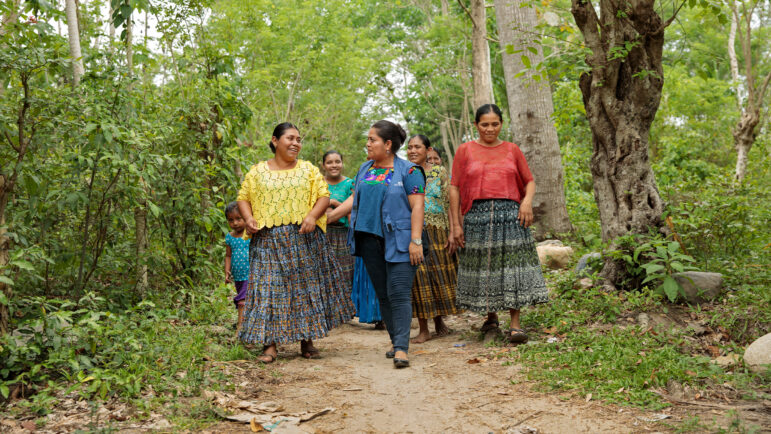Since its inception in 1999, Mongabay has grown from a rainforest information website maintained by a single person to a global news organization, thanks to a commitment to original journalism that drives real-world impact. As we face escalating global environmental crises, Mongabay recognizes the need for transformative action and expanded coverage of the issues and solutions to the challenges. The newly-published 2030 Strategic Plan outlines our approach to meeting these challenges.
This new strategy is based on Mongabay’s belief that credible independent journalism is essential to successfully address the planetary emergency because sharing knowledge through stories can inform, inspire and sustain effective action worldwide.
To do so, Mongabay improves the understanding of the concurrent global scale forces undermining the health of Earth’s systems by providing multilingual access to news to address knowledge gaps and improve transparency. Specifically, Mongabay makes science accessible, elevates the voices of those directly impacted by environmental change, and creates opportunities to hold those responsible for ecosystem destruction accountable.
Here are five ways Mongabay is adapting to the evolving journalism landscape into 2030, delving into critical strategies shaping our evolution and enhancing impact in the coming years. While focusing on biodiverse regions and urgent environmental issues, building a collaborative journalism network across national, regional, and global levels is also key.
Click here to read about the full Strategic Plan and Mongabay’s future.
1) Expanding our editorial coverage

Beach between MomiLaniKai and Pakamoi. Image by Rhett Butler.
Mongabay is dedicated to expanding our editorial coverage. Mongabay’s strength lies in global reporting on conservation and biodiversity. We believe in journalism that inspires positive action, prioritizing solutions grounded in scientific evidence and firsthand experiences. This nature-centric approach has revealed the need to raise awareness of global issues to address alarming levels of environmental stressors.
The intertwined influences of nature and society highlight the significance of the climate crisis, pollution, and unsustainable economic practices. Understanding these factors is essential to understand planetary changes contributing to biodiversity loss and extinction. Expanding our coverage is crucial to inform those actively working toward sustainable solutions.
Over the coming years, Mongabay will design a global newsroom structure with decentralized decision-making and specialized roles to advance this objective. This will allow its team to cover more topics, locations, and formats. This effort will involve:
- Giving priority to editorial coverage of themes that foster global thinking about environmental challenges while maintaining regional or national teams with local connections.
- Enhancing cross-team collaboration, learning, and priority-setting by establishing editorial hubs that coordinate coverage.
- Strengthening the ability to generate actionable primary source information that is crucial for advancing accountability.
- Expanding solutions journalism that is rooted in credible evidence and explains how and why certain responses to problems are effective, or not.
We also plan to establish a global environmental news desk, unify visual storytelling, and collaborate with other media outlets to enhance Mongabay’s relevance.
2) Engaging audiences for greater conservation impact

Members of the Kino Bay Turtle Group and Indigenous Comcáac youth during a training for the launch of a new monitoring team in their ancestral territory. Image by Astrid Arellano.
Addressing planetary challenges is complex. Mongabay plays a crucial role by providing accurate news from nature’s frontline, with the goal being that society is well-informed and people can contribute in their own way.
Our readers are essential to making a real impact. They trust Mongabay for truthful, reliable information, and we aim to listen more to our readers and understand their engagement preferences as we move forward.
The internet is increasingly filled with low-quality and misinformation, underscoring the importance of high-quality journalism. This issue may worsen with AI-generated content. As the boundaries between reality and fiction blur, there is a question of whether people will prioritize accuracy when pursuing information, potentially resulting in further erosion of truth in our digital world.
To navigate this challenge, we aim to engage with influential audiences who value credible information and build a community of individuals who care about nature and justice. We also plan to increase conversations with diverse groups, including those who are often unheard, such as Indigenous communities and young people.
Improving our work is another area of focus. We want to connect meaningfully with readers, not just count how many people visit the website. Mongabay is more interested in how people interact with and use the content.
We also want to understand what our readers think and need and we will be enhancing how we track and monitor the use of our content to grasp why the audience reads Mongabay’s reporting and how they use it. We’ll also show readers who’s creating the content by featuring editors and reporters at the site and via Mongabay’s social media channels. We’ll continue to make the content available in different languages and various formats, like audio, video and also short-form text messaging, which can be helpful for people living in rural areas and remote Indigenous communities.
Mongabay’s team will choose the best format for each story, thinking about who we want to reach and the impact that our award-winning reporting can have. We’ll also prioritize content that resonates with historically underrepresented communities, incorporating their perspectives into stories regularly and deeply.
Finally, we’ll adapt based on what works and what doesn’t, potentially using different platforms to share the content. We’ll also update the organization’s technology and design to ensure they’re modern and easy to use, while ensuring the website and mobile app are widely accessible.
3) Ensuring financial sustainability

Waterfall flowing into the Bigai river in Ecuador. Photo by Rhett Butler.
In recent months, Vice filed for bankruptcy, National Geographic fired its remaining staff writers, BuzzFeed closed its Pulitzer Prize-winning news division, MTV News shut down, The New York Times closed its sports desk, while the Los Angeles Times, Insider, and major TV and cable news networks made deep cuts to their newsrooms. In short, advertising-dependent news businesses are under great strain.
Amidst this challenging landscape, Mongabay has remained steadfast in its commitment to independent, nonprofit news. The nonprofit business model gauges return on investment by how our journalism contributes to societal impact, not net income.
This reflects our mission to produce meaningful journalism that makes a difference and has allowed us to remain resilient and grow in a turbulent media environment. As Mongabay plans to extend its impact into the next decade, financial sustainability remains a core consideration. The third pillar of Mongabay’s 2030 plan focuses on scaling up financial resources to sustain growth.
Mongabay’s current sources of funding
When CEO Rhett Butler transitioned Mongabay to a nonprofit, he found the most success with philanthropic foundations, where the organization now concentrates its fundraising efforts, which provide over 60% of our revenue. While these foundations have been catalytic partners, their project-specific funding requires us to partner with many to cover diverse topics.
Mongabay’s 2030 strategy: Diversification
A core goal of our new fundraising strategy is to diversify funding sources, with more emphasis placed on individual donors. The team will also explore other revenue streams, including earned income models, while maintaining independence and objectivity.
The support of readers and the philanthropic community will enable us to achieve the ambition of mobilizing the global community to avert the planetary emergency. We see journalism as an essential and cost-effective tool in facing these challenges.
4) Prioritizing safety

NRT rangers in the Sera Community Conservancy. Image by USAID Biodiversity & Forestry via Flickr (CC BY-NC 2.0).
In an era of increasing environmental stress and amid a sometimes pervasive sense of impunity among various actors causing environmental degradation, it’s critical that natural resource industries, their regulators, and ultimate beneficiaries are held accountable. Mongabay is committed to increasing transparency in these sectors, though global trends like authoritarianism, shrinking press freedoms, and economic volatility pose challenges to staff safety, especially in countries where independent journalism is most needed.
Safety is a critical pillar of Mongabay’s strategy. We aim to promote a culture of safety by recognizing and communicating risks to our reporters, implementing mitigation measures, and expanding safeguarding protocols. The goal is to ensure the safety and well-being of our team, including staff and contributors, and their information sources. This requires normalization of risk management and safeguarding procedures for broad compliance with policies, and the decentralization of risk management by promoting a culture of safety among staff and contributors.
Mongabay is taking several steps like defining risk tolerance and creating an incident registry. We’ve also already formed a safety committee. We’re also systematizing pre-publication risk management, ensuring up-to-date security training, and supporting trauma-informed journalism. These measures aim to ensure a safe environment for the whole staff and all freelance contributors.
5) Supporting new and established environmental journalists

Indigenous women of Guatemala’s Polochic Valley are growing their businesses and saving money with the help of a program that’s empowering rural women. Image by UN Women/Ryan Brown via Flickr (CC BY-NC-ND 2.0).
Beyond delivering high-quality environmental news, Mongabay is also committed to its staff, freelance writers, interns, and fellows. Recognizing the power of collective effort, Mongabay has mobilized a global network of communicators that tell local stories of planetary change for a diverse, global audience. This network aims not only to expand our reach, but also to enhance the professional skills of current and future journalists, ensuring viable career paths in environmental journalism.
To this end, Mongabay is not just a publisher, but also a training organization. We recognize that development of our journalism network is a long-term investment. We also understand the importance of partnering with existing media development organizations and industry associations to improve the profession more broadly, allowing us to provide broader support, including capacity building and professional development for the community.
To put this into action, the team is creating a network program for capacity-building activities, establishing a professional development plan, and promoting active participation in industry associations and events. We’re also increasing engagement with journalism students, providing guidance and demonstrating that environmental journalism is a viable career. These steps aim to develop and support a vibrant and growing journalism network that can help society address its many environmental challenges.
Mongabay’s road towards 2030
As we look towards 2030, Mongabay is committed to evolving to meet current and future challenges. Our strategic plan is a blueprint for a bold commitment to addressing global environmental crises. By focusing on these five pillars – expanding coverage, engaging audiences, ensuring financial sustainability, prioritizing safety, and supporting environmental journalists – we aim to continue driving real-world impact through journalism, while adapting to the evolving media landscape of our time.